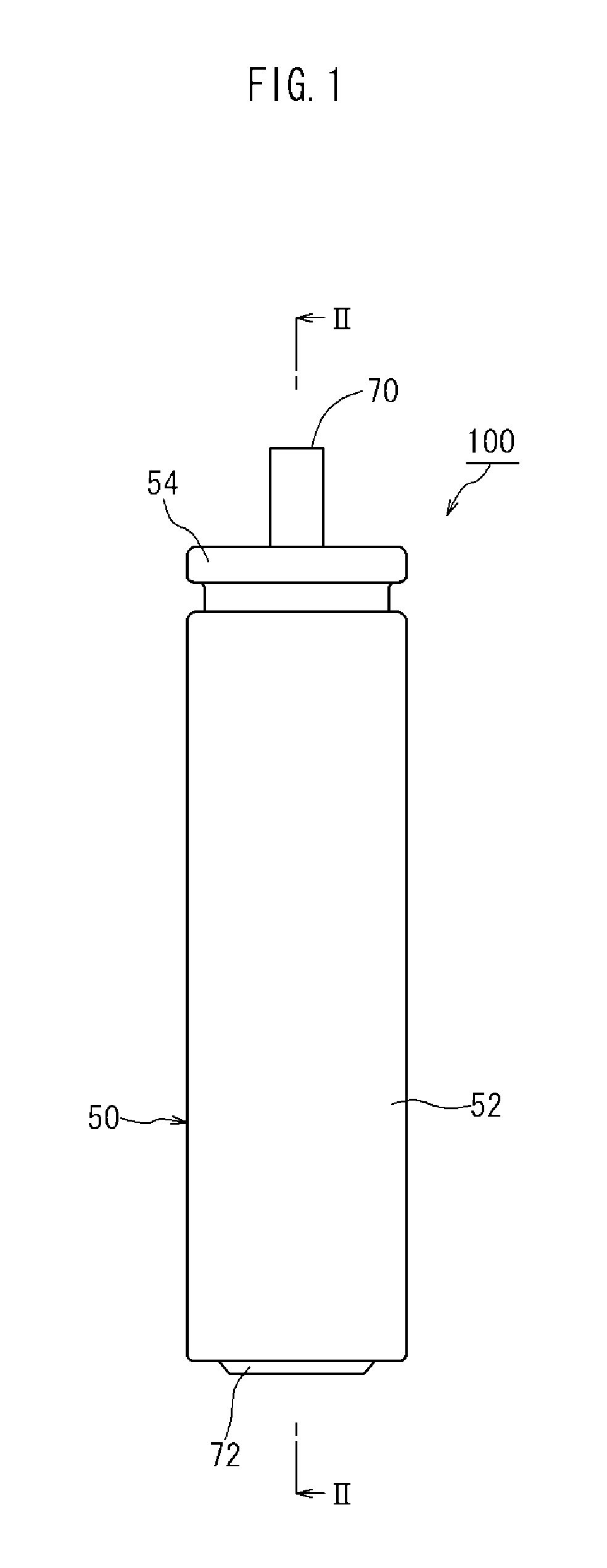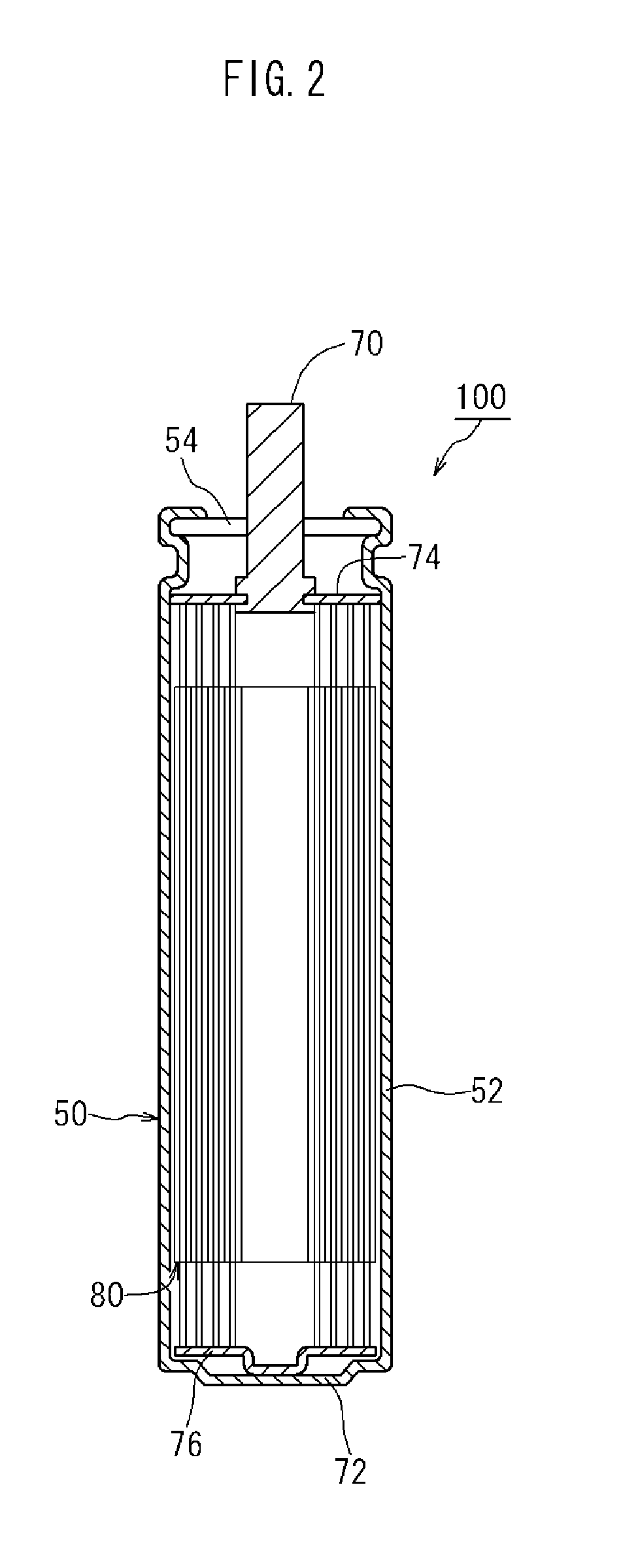Lithium secondary battery
a secondary battery and lithium technology, applied in the direction of cell components, flat cell grouping, sustainable manufacturing/processing, etc., can solve the problems of battery performance loss, battery capacity reduction, performance loss, etc., and achieve good adhesiveness (durability), high durability, and reduced amount of binder in the outer mixture layer
- Summary
- Abstract
- Description
- Claims
- Application Information
AI Technical Summary
Benefits of technology
Problems solved by technology
Method used
Image
Examples
first embodiment
[0041]The present invention is explained in detail below using the example of a lithium secondary battery (lithium-ion battery) comprising a cylindrical wound electrode body (wound electrode body) contained together with a non-aqueous electrolyte in a cylindrical container, although this is not intended as a limitation.
[0042]FIGS. 1 to 3 illustrate the general configuration of a lithium-ion battery of one embodiment of the present invention. In lithium-ion battery 100, electrode body (wound electrode body) 80 comprising long thin positive electrode sheet 10 and long thin negative electrode sheet 20 wound in a cylindrical shape with long thin separator 40 sandwiched therebetween is contained together with a non-aqueous liquid electrolyte (not shown) in container 50, which has a shape (cylindrical shape) capable of containing wound electrode body 80.
[0043]Container 50 comprises container body 52 in the shape of a cylinder closed on the bottom and open on the top, and cap 54 closing th...
second embodiment
[0072]This embodiment differs from the first embodiment in that the density of the negative active material layers is changed rather than the percentage content of binder of the mixture layers. That is, in negative electrode sheet 20 of this embodiment the theoretical capacity of the negative active material contained per unit area in mixture layer 24a on the inner circumference side of negative electrode collector 22 is equalized with that of mixture layer 24b on the outer circumference side, while the density of outer mixture layer 24b is made smaller than the density of inner mixture layer 24a.
[0073]Outer mixture layer 24b and inner mixture layer 24a each have negative active material particles composed substantially of secondary particles, and these negative active material particles are fixed to each other by means of a binder (not shown). Moreover, outer mixture layer 24b and inner mixture layer 24a have spaces (holes) in the mixture layer to be permeated by the non-aqueous l...
example 1
Preparation of Negative Electrode Sheet
[0082]In this example, negative electrode sheet 20 was prepared with different percentage contents of binder in outer mixture layer 24b and inner mixture layer 24a. Graphite powder was used as the negative active material. Two kinds of binder, styrene butadiene rubber (SBR) and carboxymethyl cellulose (CMC), were used together.
[0083]Outer mixture layer 24b was prepared by dispersing graphite powder, SBR and CMC in a water to a mass ratio of 98.6:0.7:0.7 of the three materials (binder content 1.4 mass %) to prepare an outer mixture layer paste, which was then applied to the surface of a long thin sheet of copper foil (negative electrode collector 22) and dried.
[0084]Inner mixture layer 24a was prepared by dispersing graphite powder, SBR and CMC in water to a mass ratio of 98:1:1 of the three materials (binder content 2 mass %) to prepare an inner mixture layer paste, which was then applied to the reverse surface of a long thin sheet of copper fo...
PUM
| Property | Measurement | Unit |
|---|---|---|
| temperatures | aaaaa | aaaaa |
| density | aaaaa | aaaaa |
| density | aaaaa | aaaaa |
Abstract
Description
Claims
Application Information
 Login to View More
Login to View More - R&D
- Intellectual Property
- Life Sciences
- Materials
- Tech Scout
- Unparalleled Data Quality
- Higher Quality Content
- 60% Fewer Hallucinations
Browse by: Latest US Patents, China's latest patents, Technical Efficacy Thesaurus, Application Domain, Technology Topic, Popular Technical Reports.
© 2025 PatSnap. All rights reserved.Legal|Privacy policy|Modern Slavery Act Transparency Statement|Sitemap|About US| Contact US: help@patsnap.com



